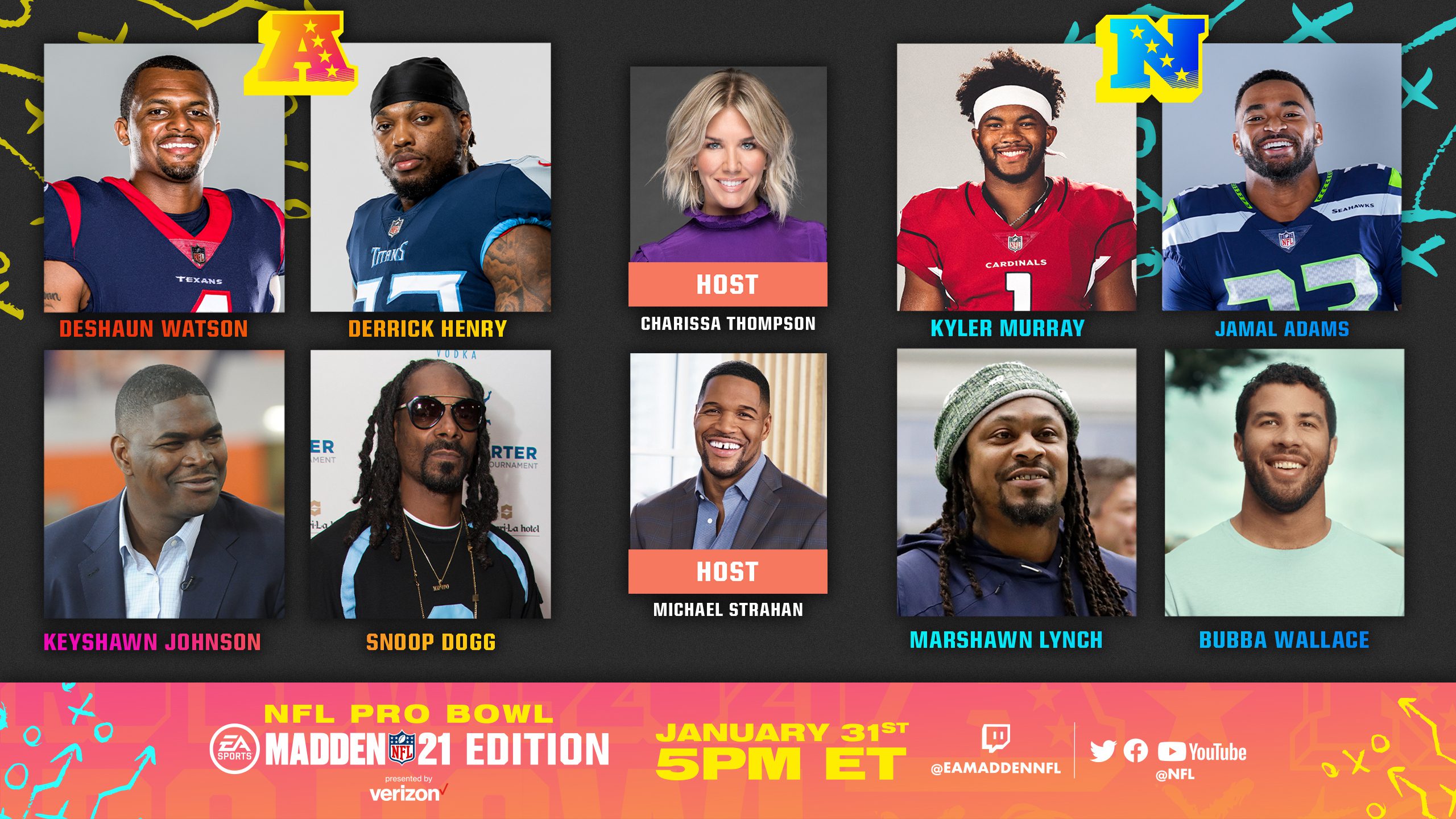This year, EA Sports has teamed up with the National Football League to deliver a transformed ProBowl experience featuring celebrities, NFL legends and Pro-Bowlers competing in the Madden NFL 21 videogame. For a broadcast-quality result, EA relies on Zixi for low latency, high quality game play transmission.
This is an excerpt from an article written by Jason Dachman and originally published by SVG. Read the original article here.
With the pandemic still wreaking havoc on the sports world, the NFL Pro Bowl is going to look just a bit different this year. The league has teamed up with EA Sports to deliver a transformed Pro Bowl, featuring celebrities, NFL Legends, and current Pro Bowlers competing in the Madden NFL 21 videogame. The event is part of an ultra-busy two weeks for EA’s broadcast team, which is also producing the Madden Club Championship (the largest prize pool in Madden NFL esports history) and will cap it with the Semifinals and Finals on Feb. 5 in advance of the Super Bowl.
“During the pandemic, esports and competitive gaming have made a jump into the mainstream and have had many more opportunities. I think this is one of the best examples of that,” says EA Head of Broadcast Joe Lynch. “The [Madden Club Championship] is one of our biggest and most exciting events of the year. And to be able to be a part of the Pro Bowl is truly a dream for everyone here. We’re all NFL fans, and to be able to work with the NFL and their teams on this has been amazing.”
Madden-izing the Pro Bowl: EA Deploys Kits, Relies on Cloud-Based Workflow
The Pro Bowl: The Madden NFL 21 Edition Presented by Verizon —a collaboration of the NFL, EA, OneTeam Partners, and esports-production outfit Find Your Battlefield — will stream on the NFL’s YouTube, Twitter and Facebook channels and on EA Madden NFL Twitch on Sunday at 5 p.m. ET. The event will re-air at 8 p.m. on NFL Network and again at 12:30 a.m.
“This is not just another Madden event,” says Lynch. “This is going to have a different look and feel than any other Madden events that we’ve done. We’re excited about it, and I think it’s going to be a lot of fun for fans.”
Snoop Dogg, Deshaun Watson, Derrick Henry, and Keyshawn Johnson will compete for the AFC, with Bubba Wallace, Marshawn Lynch, Kyler Murray, and Jamal Adams playing for the NFC. The two teams will play in Madden NFL 21 from their homes, using the official Pro Bowl rosters with a new competitor tapping in to play each quarter. Michael Strahan and Charissa Thompson will host the Sunday event with popular streamers Ninja, FaZe Swagg, AustinShow, and AMP also hosting watch parties on their channels Sunday at 5 p.m.
The event was preproduced on Thursday via a cloud-based OBS workflow, and the EA team is now in the midst of tweaking and finalizing the show that will stream on Sunday. Each player and talent was provided with a full standardized kit consisting of a Sony mirrorless camera, Sennheiser lav mic, lighting kit, laptop, and Ethernet router. EA also upgraded competitors’ internet where necessary.”
“We’ve been honing our kits with our Madden pros and talent for months,” says Lynch, “but it was definitely more of a challenge for the [celebrity competitors] for the Pro Bowl, especially when you’re dealing with people that potentially aren’t familiar with the technology. Also, the increased COVID restrictions make it tough because we can’t even get into someone’s house to set all the equipment up; we have to leave a present on their doorstep with directions. But all the credit goes to our production partners for simplifying that process and making it as easy as possible for the talent and players to set up.”
To ensure video quality, each player and talent was recorded locally on the laptop provided. Immediately after the show was over, EA engineers remoted into each site’s computer and transferred the recorded files (gameplay for players, their POV cameras, and, in some cases, roaming cameras) into frame.io folders with predefined destinations to allow the whole team to access them. The production team now has Friday and Saturday to handle graphics, any edits/fixes, color correction, and audio mixing for distribution to digital outlets and NFL Network on Sunday.
In terms of signal flow, EA deploys AWS Elemental Media Connect as the primary ingress/egress point for its virtual NOC, along with Zixi for low-latency/high-quality gameplay. This allows EA to transmit high-quality/low-latency signals from sites with restricted bandwidth access, such as player/talent homes. EA also uses this transport protocol for international acquisition/distribution.
As for distribution on Sunday, EA will internally load-balance and distribute the final signal to all endpoint destinations via the AWS Elemental MediaLive platform.
In an interesting twist, the EA team needed to totally rethink the overall signal flow due to the increased complexity in the show format (the need to swap players between quarters). Given the remote workflow, it wasn’t possible to play the games as preferred in a LAN environment. And the ability to switch players quarter by quarter on a console isn’t possible within the standard Madden 21 game. Instead, the team loaded Parsec on the laptop in each kit and attached an Xbox controller to it, giving each player the look and feel of playing on an Xbox. However, the laptop remotes into a host machine located with EA’s Madden League Ops team in Orlando. League Ops is then able to change players and create seamless gameplay while maintaining competitive integrity.
“Phenomenal work by the Development and League Operations teams to [devise] this solution,” says Lynch. “It’s different in that we have a lot of players rotating through one specific game, so there’s increased complexity when it comes to signal flow. It’s an evolution of everything that we’ve done since March, and it will continue to be an evolution. We’re constantly iterating and making things better.”

